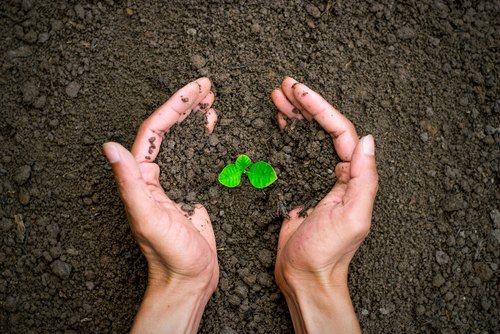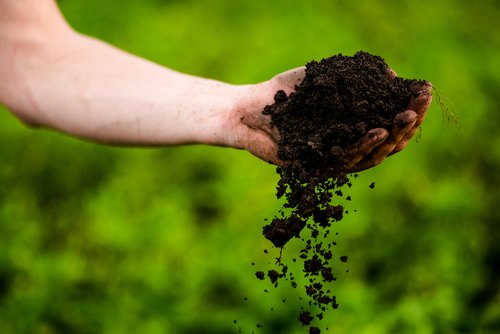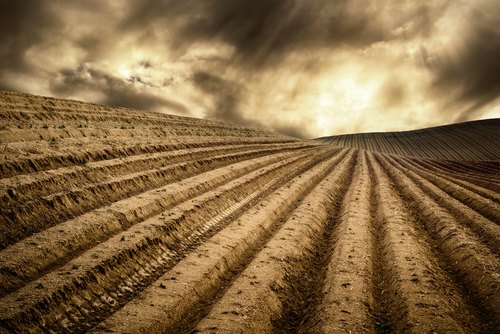Introduction
It is important to remember that we are all connected to the periodic table, it is not just a boring table to remember for a chemistry exam, we, as humans, are constructed with these elements and we are surrounded by these elements which include the essential minerals, which we must consume every day to replenish our stores, to be used by our body providing us with optimum health.
They exist in great abundance in our oceans and at one time on land, because the planet once was just ocean waters, and then time carved out the dry land that became the continents and countries, full of the ocean’s minerals that were an integral part of the soil, rivers and lakes.
Table 1 shows the amount in ppm (parts per million) of ocean minerals that all oceanic life depend on.
If these minerals were not present in the oceans, you would witness ocean veterinarians examining the whales and the sharks for hypertensions and clogged arteries…lol.
The ocean itself controls mineral amounts, any excess falls to the bottom and is recirculated when needed.
Table 1: 60 Essential Minerals/Sea Minerals (ppm)
| Mineral | Sea Mineral | Mineral | Sea Mineral | Mineral | Sea Mineral |
| Aluminum | 0.01 | Arsenic | 3.30E-004 | Barium | 0.03 |
| Beryllium | 1.7E-006 | Boron | 4.6 | Bromine | 65 |
| Calcium | 400 | Carbon | Cerium | 4E-004 | |
| Cesium | 5E-004 | Chloride | 19000 | Chromium | 5E-005 |
| Cobalt | 2.7E-004 | Copper | 3E-003 | Dysprosium | |
| Erbium | Sea plants | Europium | Sea plants | Gadolinium | Sea plants |
| Gallium | 3E-005 | Germanium | 7E-005 | Gold | 1.1E-005 |
| Hafnium | 8E-006 | Holmium | Sea plants | Hydrogen | |
| Iodine | 0.06 | Iron | 0.01 | Lanthanum | 1.2E-005 |
| Lithium | 0.18 | Lutetium | Sea plants | Molybdenum | 0.01 |
| Magnesium | 1350 | Manganese | 2E-003 | Neodymium | Sea plants |
| Nickel | 5.4E-003 | Niobium | 1E-005 | Nitrogen | |
| Oxygen | Phosphorous | 0.07 | Potassium | 0.38 | |
| Praseodymium | Sea plants | Rhenium | Sea plants | Rubidium | 0.12 |
| Samarium | Sea plants | Scandium | 9E-006 | Selenium | 9E-005 |
| Silica | 3 | Silver | 3E-004 | Sodium | 10500 |
| Strontium | 8.1 | Sulphur | 885 | Tantalum | 2.5E-006 |
| Terbium | Sea plants | Thulium | Tin | 3E-003 | |
| Titanium | 1E-003 | Vanadium | 2E-003 | Ytterbium | Sea plants |
| Yttrium | 3E-004 | Zinc | 0.01 | Zirconium |
Note1 : Sea minerals are measured in PPM (Parts per million and within an aqueous solution 1 ppm = 1mg/litre), e.g Hafnium= 8e-6 (0.000008 ) which is 0.000008g of Hafnium/1g of seawater which equates to 6.6e+5g of water = 1g of Hafnium, or 660 liters of seawater contains 1 g of Hafnium
Note2: Although not measured in a sea water sample, they exist, as found in sea plants that absorb and concentrate all minerals
Although minerals found in the sea are in small quantities, the uptake of these minerals by sea plants are highly concentrated in variable amounts, so minerals such as Chromium equates to a value of 1 ppm in the sea plant from a sea water value of 0.00005 ppm (Concentration = 20,000), and Copper which is measured at 0.0003 ppm becomes a value of 11 in the sea plant (Concentration = 36,666), Iron has a concentration value of 70,000 and Hafnium 500,000 and so on.
Sea animal life throughout the food chain also concentrate minerals from what they consume but not to the same degree as sea plants.
Iron concentration in a sea plant is 700 ppm while in a sea animal it’s 400ppm.
Minerals Fit for Human Consumption

Humic shale is decomposed plant material from prehistoric plant matter which is over 75 million years old.
This decomposition is produced from soil bacteria that has pre-digested the plants forming a black spongy layer of decayed organic compost.
Back in ancient times, all plants contained the 60 essential minerals and more and as Joel Wallach recalls in his book ‘Epigenetics’, during prehistoric times the soil contained up to 84 minerals allowing trees to grow 25 feet/year and dinosaurs like the Brontosaurus to develop into a 70 ton beast with a relatively small mouth eating mineral rich foliage.
It is these deposits that supplement companies use to manufacture their essential nutrient products or harvest sea vegetables that also contain all the 60 essential minerals and more.
This humic shale are in the form of Plant Derived Colloidal Minerals that are very efficiently absorbed by all living organisms, and in the ocean, sea plants absorb minerals which they convert into colloidal minerals.
Most vitamins and minerals supplied in capsule/pill form such as multivitamins are not readily absorbed by the body, but it depends on the quality of the delivery system (the encapsulation).
Metallic minerals that are common ingredients in tablets and capsules and even powders such as lactates, sulfates, carbonates and oxides are at best 8% bio-available to humans.
The body still uses the nutrients it needs or adapts
At the time when life on dry land was derived from the sea it still maintained the nutrient density as it did in sea waters and that Nutrient ‘footprint’ existed within humans thousands of years ago in the extracellular fluid that nourished their cells.
The Nutrient ‘footprint’ requirement is still there but most people are not satisfying this requirement and are suffering the consequences.
The body strictly adheres to its nutrient needs even if it has to play robin hood toward nutrients stored in other areas of the body like bones.
We know that Calcium deficiency or malabsorption cause bones to lose their structural integrity because the body is making tight restrictions in to feed the bloodstream, that, if not serviced with Calcium could be life threatening, so it makes sacrificial decisions to redistribute the required nutrient to preserve the survival of the host.
Derived Minerals on the Land

Occasional volcanic activity in some areas of the planet is nature’s way of replenishing the soils minerals which are transported by rivers and rain. Table 2 shows a mineral sampling of dry land minerals as comparison to the oceans minerals.
Table 2: 60 essential minerals/rock minerals (ppm)
| Mineral | Rock Mineral | Mineral | Rock Mineral | Mineral | Rock Mineral |
| Aluminum | 5000 | Arsenic | 1 to 8 | Barium | 425 |
| Beryllium | 2 to 8 | Boron | 10 | Bromine | 3 to 5 |
| Calcium | 41500 | Carbon | Cerium | 60 | |
| Cesium | 1 | Chloride | 130 | Chromium | 100 |
| Cobalt | 25 | Copper | 55 | Dysprosium | 3 |
| Erbium | 2.8 | Europium | 1 to 3 | Gadolinium | 5.4 |
| Gallium | 15 | Germanium | 5.4 | Gold | 0 |
| Hafnium | 3 | Holmium | 1.2 | Hydrogen | |
| Iodine | 0.5 | Iron | 56300 | Lanthanum | 30 |
| Lithium | 20 | Lutetium | 0.5 | Molybdenum | 1.5 |
| Magnesium | 23000 | Manganese | 950 | Neodymium | |
| Nickel | 75 | Niobium | Nitrogen | ||
| Oxygen | Phosphorous | 1050 | Potassium | 20000 | |
| Praseodymium | 8.2 | Rhenium | 5.00E-003 | Rubidium | 90 |
| Samarium | 6 | Scandium | 22 | Selenium | 0.05 |
| Silica | 281500 | Silver | 0.07 | Sodium | 23600 |
| Strontium | 375 | Sulphur | 260 | Tantalum | 2 |
| Terbium | Thulium | 0.48 | Tin | 2 | |
| Titanium | 5700 | Vanadium | Ytterbium | ||
| Yttrium | Zinc | Zirconium |
Note 1 a ppm value taken on dry land means mg/kg
Mineral Access

Over time, hundreds, thousands of years the mineral rich rock becomes dispersed worn away by rain and wind, broken down into smaller particles that become part of the soil that serve as nutrients for bacteria, who die and decompose, forming nutrients that are absorbed by plants, which also decompose throughout the seasons, and finally become fossilized nutrients like the humic shale mentioned earlier.
Although our modern world has managed to deplete the land that once was mineral rich, we still have access to some areas that have entombed a mineral rich resource of an age long gone, but we still have the mineral rich oceans.
Because of the sheer vastness of our blue planet it has afforded some protection from the ignorance and greed that has contaminated dry land and sucked the natural life out of it.
Fortunately we have some dedicated ‘green peace’ thinking people that volunteer their time to go out on the ocean and dredge what they can, the many pollutants that man has discarded, like plastic bottles, cans, human waste etc using the ocean as their personalized garbage disposal.
We all must realize that minerals are just as essential as Vitamins.
Ironic as it may be, in the ocean, we start with tiny amounts of minerals that are absorbed and concentrated by sea plants into much greater amounts that we can harvest.
On the land we start with a minerals in great quantity but as we follow the disbursement patterns, the quantity diminishes until food corporations in general remove what little is left providing processed food that is worthless to our health completely devoid of nutrition.
As our health erodes from eating such food, we are forced to visit conventional medicine for prescribed medicine that will make us more comfortable as our health deteriorates even further until we are featured in a newspaper in the obituaries column.
Friends and family all commenting that the person ate so well and they could not understand why he/she died at such an early age.
Without health,life is not life,it is only a state of languor and suffering-an image of death
-Francois Rabelais (1494-1553)
It is no wonder that life in the ocean is far healthier than on dry land.
While some people argue that buoyancy within an aqueous environment prevents the stress and trauma experienced on land, although aquatic organisms do expreience stress espcially if they are about to become something’s dinner.
In general, except for predatory behaviour, aquatic life enjoy a healthy life because of the rich minerals that provide health containment to those organism that live there.
Consider the fact that same species, such as trout live twice as long in the ocean than in fresh water. We are also informed by Dr Murray that some trout who live in freshwater contract terminal liver cancer due to the lack of minerals.
Every living organism can Suffer Nutrient Deficiency

Gardeners, landscape experts, farmers, veterinarys are all very well aware of nutrient deficiency.
In fact most disease conditions in the animal world have been cured, and some diseases eradicated.
Farmers know only too well the high cost of a veterinary services, so it is within their interest to make sure their animals are healthy and are fed with all of the required essential nutrients for growth and development, because this is their livelihood.
Next time you visit the grocery store check the ingredient list of a reputable bag of dog food or a bag of soil fertilizer and then compare it to any human food on the shelf.
Your plants and animals are getting fed better than you are.
Why?
Food manufacturers ignore that humans like all living organisms need all essential nutrients.
Why isn’t veterinary medicine talking to human medicine?
How many readers have had or know someone who has had kidney stones..what does your ‘human veterinary’ recommend ?…no more dietary calcium.
Fifty years ago the agriculture industry found that giving more Calcium, more Boron and more Magnesium prevents kidney stones in animals; in fact if an animal gets kidney stones the animals dies of ‘water belly’ so it was essential to find a prevention.
A study involving 45,000 people completed in March 1993 at the Harvard medical school concluded that calcium limits kidney stone risk and confirmed what vets have known for 50 years, and it’s not caused by dietary calcium but the calcium leached from the bone because of a raging calcium deficiency, due to malabsorption.
The veterinary practice are also aware of dementia like Alzheimer’s in animals, that can be prevented by high doses of Vitamin E and a low intake of vegetable oil, so why are so many people languishing in assisted living not even remembering their family any more.
Table 3: Mineral deficiency signs in plants/animals/humans
| Mineral deficiency | Plant | Animal | Human |
| Calcium | New leaves distorted
Blossom end rot |
Rickets,osteoporosis, thin shelled eggs,milk disease, | Rickets, osteoporosis, kidney stones, hypertension, Neuropathy (Trigeminal neuralgia, bells palsy), panic attacks, bone spurs, spondylitis, receding gums. Poor clotting time, arthritis, |
| Copper | dieback of stems and twigs, yellowing of leaves, stunted growth and pale green leaves that wither easily.
Exanthema disease that affects fruit trees |
Bone/joint disease, tendon,ligament problems, Poor coat color, early embryonic loss, Enzootic ataxia ( in sheep), BSE cattle ( mad cow disease ), | Grey/white hair, dry brittle hair, Creutzfeldt-Jakob disease ( BSE in humans ), Ptosis ( sagging tissue), hernias, Varicose veins, Aneurysms, Kawaski disease, hypo/hyper thyroid, liver cirrhosis, high blood chloesterol, Hemosiderosis, Neutropenia |
| Nitrogen | Older leaves go yellow, plant is a light green | Grass Titany | Affects protein synthesis |
| Magnesium | Older leaves turn yellow on the edges | Weakness, Muscle trembling, Ataxia (muscle incoordination)
Depression, Hyperreflexia (overactive reflexes) Tetany (severe muscle pain), Behavioral changes. Arrhythmias (abnormal heart rhythms) |
Asthma,anorexia,menstrual migraine, neuromuscular problems,Tetany ( Convulsions), Depression, Muscular weakness, tremors, vertigo, small artery calcification |
| Phosphorous | Burnt looking leaf tips, older leaves turn dark green or red/purple | Rickets & Osteomalacia | Loss of appetite, anxiety, bone pain, fragile bones, stiff joints, fatigue, irregular breathing, irritability, numbness, weakness, weight change |
| Cobalt | Low B12 levels, poor growth,low body condition | Pernicious anemia, fatigue, weakness in limbs, numbness/tingling in arms & legs, nausea, weight loss, confusion, headache | |
| Potassium | Wilting older leaves, scorched look, intervienal chlorosis | Cardiac arrest, nervous disorder, weakness | Muscular weakness, mental apathy, hypokalemic cardiac failure |
| Selenium | Muscle cramps, low stress tolerance, impaired immunity, bad performance | Anemia, lipofucin, fatigue, muscular weakness, myalgia, rhabdomyalisis, scoliosis, muscular dystrophy, cystic fibrosis, Keshans disease ( Cardiomyopathy, Multiple sclerosis, macular degeneration, heart palpitation, irregular heart beat, liver cirrhosis, pancreatitis, pancreatic atrophy, lou gehrigs disease (ALS), Parkinsons, infertililty and birth problems, thyroid problems | |
| Sulphur | Young leaves look yellow, followed by older leaves | Digestive disorder, slow movements | Degenerative arthritis, systemic lupus erythematosis, sickle cell anemia, collagen loss |
| Iodine | Goiter, hair loss, scaly skin | Goiter, Hyper/Hypothyroidism | |
| Boron | Terminal buds dies, ‘witches brooms’ develop. Lack of Boron in cauliflower can cause disease | Bone calcification | Abnormal metabolism of calcium/magnesium, hyperthyroidism, sex hormone imbalance, osteoporosis,arthritis, neural malfunction |
| Iron | Leaves turn yellow, virus disease of Camellias producing yellow blotches on leaves | anemia | anemia |
| Manganese | Leaf veins are yellow, stunted and distorted palm fronds, dead spots
grey speck of oats spots on plants. Chlorosis in tomatoes, Pahala Blight on sugar cane making the plant subsceptible to fungus infection |
Abnormal bone/joint development, impaired make/repair joint cartilage, abnomral skin,hair and hooves | Congenital ataxia,deafness, asthma, Chondromalacia, slipped tendon, TMJ, Repetitive motion syndrome, Carpel Tunnel sysndrome, Covulsions, Infertility, still birth, retarded growth, shortened long bone, Loss of Libido |
| Molybdenum | Older leaves turn yellow and yellow new leaf veins | ||
| Zinc | Rosette terminal veins,
Rosette disease that affects fruit trees |
Abnormal skin and hooves, bone/joint problems,poor wound healing,fertility problems | Birth defects including downs syndrome, cleft palate, cleft lip, brain defects incl dorsal herniation, cerebral palsy, hydrocencephaloceol, Anophthalmia, Agnathia jaw structure, Spina Bifida, clubbed limbs, Syndactyly ( Webbed fingers 7 toes), missing limbs & digits, hernia, Gastroschisis, heart and lung and urogenital defects. |
All plants need a variety of minerals to thrive.
Corn requires 48 minerals to grow successfully, while wheat and oats require 36 minerals, and soybeans, apples, pears, peaches and other fruit need 30 minerals mined from the soil.
Furthermore, most vegetables like peas, potatoes, tomatoes, carrots, lettuce need 25 minerals for growth and to flourish.
As you can see from Table 3 the many disease states that can develop for the sake of $3/day of supplementation for humans, plants and animals.
The choice is yours, I don’t know how you can expect an allopathic physician to figure out how to deal with all these conditions without ‘ghostbusting and chasing shadows’.
Conclusion
A few years ago the voice of the utmost arrogance and ignorance made a statement in a science article saying I quote :
“Popping vitamins does not do you any good, we get all the vitamins we need from our diet, and taking supplements just gives you expensive urine”
The US senate document 264 published in 1936 from the 74th congress 2nd session remarked on the depleted soil growing lands, devoid of crucial nutrients including the 60 minerals that every living organism needs and it stated that:
“The alarming fact is that foods (fruits, vegetables and grains) now being raised on millions of acres of land that no longer contain enough of certain minerals are starving us – no matter how much of them we eat. No man of today can eat enough fruits and vegetables to supply his system with the minerals he requires for perfect health because his stomach isn’t big enough to hold them.”
I don’t care how many so called physicians want to debunk what was announced in this document, and continue to deny its relevance.
We have had 80 years to reverse it but agriculture and governing powers have failed to recognize the significance toward human ill-health and now they reaping the ‘benefits’ by bankrupting government coffers helping the hundreds and thousands that are sick and dying.
We are on the way to fulfill the prediction of Joel Wallach that this generation today will be burying their children.
I don’t want to sound like the Grim Reaper but like the song lyrics from Don Maclean about Vincent Van Gogh says:
‘They would not listen, they’re not listening still, Perhaps they never will‘
Check out the Previous Article in this series:
https://www.extremehealthacademy.com/90-essential-nutrients-part-1-overview/
https://www.extremehealthacademy.com/90-essential-nutrients-part-2-b-vitamins-1-6/
https://www.extremehealthacademy.com/90-essential-nutrients-part-3-b-vitamins-7-12/
https://www.extremehealthacademy.com/90-essential-nutrients-part-4-vitamins-acde/
https://www.extremehealthacademy.com/90-essential-nutrients-vitamin-d/
https://www.extremehealthacademy.com/essential-nutrients-vitamin-e/
https://www.extremehealthacademy.com/essential-nutrients-vitamin-k/
https://www.extremehealthacademy.com/essential-nutrients-choline/
https://www.extremehealthacademy.com/essential-nutrients-part-9-flavonoidspolyphenols/
https://www.extremehealthacademy.com/essential-nutrients-part-10-amino-acids/
https://www.extremehealthacademy.com/essential-minerals-part-14-mineral-synergism-and-antagonism/
References/Acknowledgments:
- Minerals for the genetic code Charles Waters/Dr Richard Olree 2013
- Sea energy agriculture Dr Maynard Murray 1976
- Modern Nutrition in health and disease M.Shils, M.Shike, C.Ross, B. Caballero,R.Cousins
- Epigenetics Essential minerals section Joel Wallach book 2014
- Healing power of minerals and trace elements Paul Bergner 2003
- Trace Minerals 101 Zinpro website
- Trace mineral deficiencies cause problems in herds Cattle today website
Author: Eric Malouin